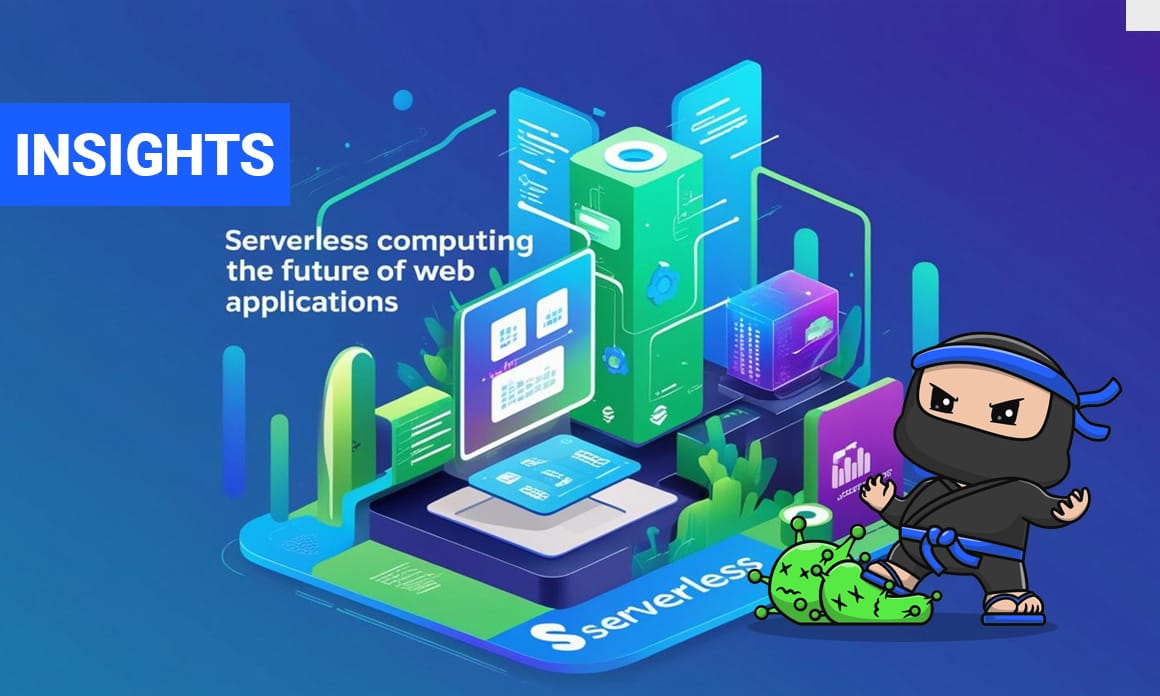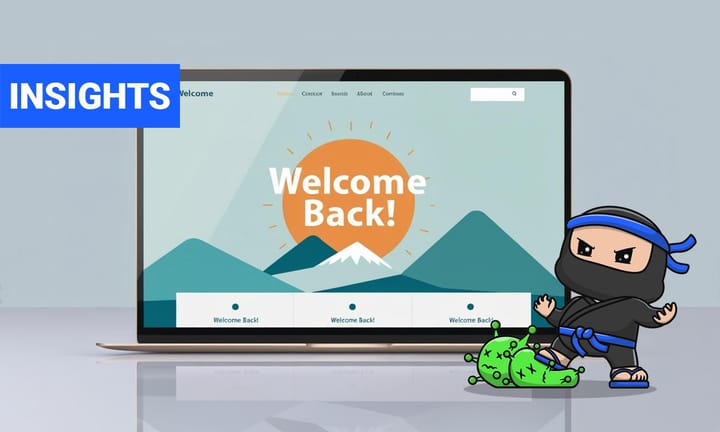Is FaaS and Serverless Computing the Future of Web Applications?
Explore the shift towards FaaS and serverless computing, transforming web application development through enhanced scalability, cost efficiency, and innovation.

The landscape of web applications is undergoing a paradigm shift. One term relentlessly surfacing in technical forums and boardroom discussions is "serverless computing." More specifically, Function-as-a-Service (FaaS) is gaining traction as businesses seek agility, efficiency, and cost-effectiveness. This raises an important question: Are FaaS and serverless computing the future of web applications? In this article I explore why they might indeed be the path forward, and why we should consider shifting from traditional websites and hosting.
With the traditional approach to web hosting, developers are often expected to manage complex infrastructure. I vividly recall launching my first website, an exciting time until the reality of server maintenance, load balancing, and deployment woes set in. I was bogged down by:
- Infrastructure Overhead: Constantly tending to server operations detracts from the core task: building stellar applications.
- Scalability Challenges: Anticipating traffic spikes becomes a gamble. Over-commit, and you overspend; under-commit, and you risk downtime.
- Time Consumption: Regularly updating and securing servers takes away valuable time from innovation and development.
- Cost Management: Fixed costs can be daunting, especially when server capacity does not match fluctuating usage demands.
These issues not only slow down the innovation pipeline but also inflate operational costs and introduce risks. Consider the challenges:
- Reacting to Traffic Surges: When a product goes viral, servers might buckle under pressure, causing potential loss of revenue and customer trust.
- Resource Allocation: Allocating an inordinate number of resources to server upkeep means less focus on developing new features.
- Security Gaps: Constant vigilance against evolving cyber threats is necessary, which can overwhelm IT teams and expose vulnerabilities.
- Wasteful Spending: Paying for fixed server capacity leads to under-utilization during off-peak times, affecting profitability.
Transitioning to serverless computing encapsulates freedom from these pain-points. FaaS, in particular, presents a revolutionary model. Here's why this shift is beneficial:
- Scalability: Serverless architectures effortlessly scale up and down, matching demand in real-time without manual intervention.
- Cost Efficiency: Pay-as-you-go pricing models translate into savings, as you are billed solely for the compute power you use, not the capacity you maintain.
- Focus on Code, Not Servers: Developers can concentrate on coding and service delivery, with infrastructure concerns offloaded to cloud providers.
- Rapid Prototyping: Serverless setups allow for quick iterations and prototyping, enabling faster go-to-market for new applications.
Considerations should be conscientious, however. Potential pitfalls like cold start delays or vendor lock-in need assessment. Nevertheless, frameworks within popular cloud platforms are continually evolving to mitigate these concerns.
Impacts and Benefits
Adopting serverless architecture unlocks numerous advantages:
- High Availability: Modern cloud platforms ensure data redundancy and disaster recovery, affording users about 99.99% uptime.
- Environmental Efficiency: With resources allocated on demand, serverless computing operates with minimal energy usage, supporting sustainability initiatives.
- Increased Agility: Developers can implement continuous integration and delivery pipelines, optimising team productivity and responsiveness.
FaaS and serverless computing offer a compelling alternative to traditional server-based approaches. With benefits ranging from cost reduction to operational efficiency, the technology not only redefines application delivery but also aligns with future-focused, sustainable business models.
Planning a New Website Using FaaS and Serverless Computing
Creating a new website can feel like finding your way through a maze. It's exhilarating but also daunting, especially with the rapidly evolving technology landscape. Function as a Service (FaaS) and serverless computing, is a powerful shift in web development transforming how we approach this task and redefines your architecture.
Steps to Plan a New Website Using FaaS and Serverless Computing
1. Understand the Basics of Serverless and FaaS:
Begin by familiarising yourself with how serverless and FaaS work. Platforms like AWS Lambda, Google Cloud Functions, and Azure Functions offer excellent resources.
2. Define Functional Requirements:
Determine what features and functionalities your website needs. Consider what functions can benefit from serverless execution, such as image processing or data analytics.
3. Choose the Right Service Provider:
Evaluate different serverless providers based on your specific needs. Each comes with unique strengths; choose the one that complements your technological goals and budget.
4. Design for Scalability:
Plan your website architecture to leverage serverless whimsically. This may include utilising managed databases, API gateways, and authentication services provided by your chosen platform.
5. Prototype Quickly:
Create an MVP (Minimum Viable Product) using serverless resources. This allows you to test and iterate swiftly without heavy initial investments.
6. Implement Robust Security:
While serverless abstracts many security concerns, it's crucial to implement best practices around data access, encryption, and identity management.
7. Monitor and Optimize Continuously:
Use built-in monitoring tools to analyse performance, troubleshoot bottlenecks, and continuously optimise costs and functionalities.
When building a serverless web application, your front-end and back-end tech choices should prioritise speed, simplicity, and scalability. Here are some great combinations:
1. HTMX + Go (Golang)
Why it works:
- HTMX enables seamless AJAX updates without complex front-end JavaScript frameworks.
- Go is fast, efficient, and great for lightweight serverless functions (e.g., AWS Lambda with Go runtime).
Use case: High-performance, minimal JS applications with quick API responses.
2. SvelteKit + Node.js (or Deno)
Why it works:
- SvelteKit builds fully static or SSR applications that work well with serverless.
- Node.js/Deno handles API requests efficiently on platforms like Vercel or Cloudflare Workers.
Use case: Interactive UIs with client-side hydration and dynamic content.
3. Alpine.js + Python (FastAPI)
Why it works:
- Alpine.js provides a lightweight JavaScript framework with minimal overhead.
- FastAPI is asynchronous, making it excellent for serverless back-end logic.
Use case: Real-time dashboards, authentication flows, or API-driven apps.
4. React (Next.js) + Rust (Axum)
Why it works:
- Next.js has built-in serverless support with API routes.
- Rust (Axum) offers ultra-fast, memory-safe API handling.
Use case: High-performance, secure, and scalable applications.
5. Vue (Nuxt) + PHP (Laravel Vapor)
Why it works:
- Nuxt.js handles SSR and static generation for Vue applications.
- Laravel Vapor runs Laravel on AWS Lambda with effortless scaling.
Use case: CMS-driven apps, e-commerce, and real-time dashboards.
6. SolidJS + Bun (or Deno)
Why it works:
- SolidJS is super reactive and fast with minimal runtime.
- Bun/Deno is an alternative to Node.js with better performance for serverless.
Use case: Fast, modern web apps with optimised performance.
Choosing the Best Stack
- Minimal JS, simple backend: HTMX + Go
- Static-heavy site, some interactivity: SvelteKit + Node.js
- High-performance serverless APIs: Next.js + Rust
- PHP ecosystem, serverless Laravel: Nuxt + Laravel Vapor
A New dawn for Web Development
Transitioning to a serverless architecture is not just about staying relevant in a fast-paced tech world, it's about reclaiming your creative freedom. FaaS and serverless computing harness the technology of tomorrow to solve the issues of today, offering an exhilarating path toward innovation.
Are you ready to leave cumbersome overheads behind and embrace a model that prioritises agility and excellence?
Further Resources
By examining the transformative potential of serverless computing and its relevance to modern web applications, we better arm ourselves with knowledge to future-proof our digital strategies.




Comments ()